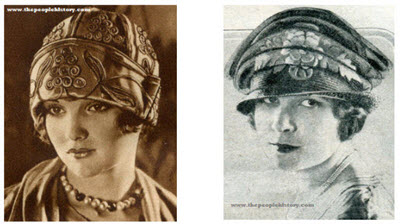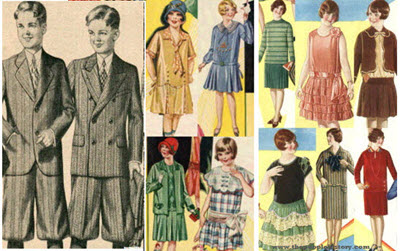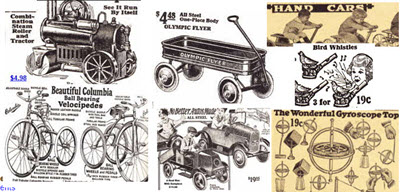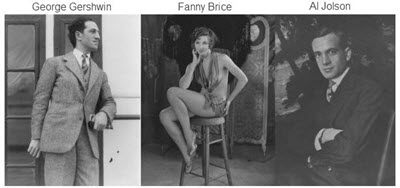The 1800's Major History Events
- America evolves after the American Revolution which gained Independence from the British (1775 to 1783)
- America Purchase of Louisiana (1804)
- Texas Joins The Union (1845)
- American Civil War (1861-1865)
- The Indian Wars (ran for over 200 years ending in 1890)
- Statehood, the creation of most of the States that exist today (28 States Created)
- American Old West Settled
- The Indian Wars (ran for over 200 years ending in 1890)
The 1800's From 1800 to 1919 History Major News and Events and Technology
Jump To Shaping Of The U.S.A. () Europe () World () Technology ()Events From the 1800 to 1809
More Detailed 1800 to 1809 HistoryNapoleon Marches Into Austria
First use of the White House
United States Presidential Election
Invention of the Modern Day Battery
Library of Congress
1801
Tsar Paul I Assassinated
Act of Union UK Enacted
The Battle of Copenhagen
Cairo Captured
Ultraviolet Radiation Discovered
Thomas Jefferson Becomes President
1802
West Point Military Academy
1803
The Louisiana Purchase
Railway Before Trains
Ohio Becomes The 17th state in the Union
Britain Prepares For Possible Invasion By The French
The Year New Jersey Abolishes Slavery
The Lewis and Clark Expedition
Napoleon Bonaparte Coronation
Twelfth Amendment To The Constitution
First Working Full Size Railway Steam Locomotive
1805
The Battle of Austerlitz
Death Of Admiral Nelson During The Battle of Trafalgar
1806
Bavaria made into a kingdom
Elgin Marbles
Webster American-English Dictionary Published
1807
UK abolished Slave Trade
1808
United States Presidential Election
1809
The Illinois Territory Defined
Man-made electrical lighting
James Madison Becomes President
Events From the 1810 to 1819
More Detailed 1810 to 1819 HistoryThe first Oktoberfest
Beethoven "Fur Elise"
The Tin Can
1811
The Battle of Tippecanoe
New Madrid Earthquake, Missouri
1812
Louisiana Joins The Union
Napoleon Retreats From Moscow
The Indian War of 1812
USS Constitution/Old Iron Sides
Fort Dearborn / Modern Day Chicago Attacked
1813
Pride and Prejudice
1814
British Troops Burn Down Washington D.C.
Napoleon Abdicates the French Throne
Norway Gains Independence
Battle Of Waterloo
1816
Argentina Gains Independence
Indiana becomes the 19th State
1817
Mississippi becomes the 20th State
The First Seminole War
1818
The Modern Prometheus/Frankenstein
Illinois becomes the 21st State
Stars And Stripes U.S. Flag
Modern Fire Extinguisher
1819
Raffles Founding of Modern Singapore
Alabama becomes the 22nd State
Washington Irving Publishes "The Sketch Book"
US Congress enacts First Immigration Law
Brief Summary of the 1800's
1800's When studying history, it is important to remember that one of the countries that went through the largest transformation in the 1800's was the United States of America. Just a quick look at some of the events occurring during the century makes you realize how different America was at the start of the century compared to the end of the century. The events that shaped that transformation include(1) America evolves after the American Revolution which gained Independence from the British (1775 to 1783)
(2) Purchase of Louisiana (1804)
(3) Texas Joins the Union (1845)
(4) American Civil War (1861-1865)
(5) The Indian Wars (ran for over 200 years ending in 1890)
(6) Statehood, the creation of most of the States that exist today (28 States Created)
(7) American Old West Settled
We should also remember that some of the best-known Military Leaders attained almost star quality in their countries. For example, Nelson and the Duke of Wellington (Arthur Wellesley) in Britain and Napoleon in France.
Under the watchful eye of Queen Victoria, by the end of the 1800's "The British Empire" controlled nearly 1/4 of the world's population.
The invention and first use of technology from the 1800's is also integral to our lives today. Steam locomotives, the battery, photography, sewing machines, pasteurization, dynamite, the telephone, the first practical car using internal-combustion engine and Coca Cola are just a few examples.
Joseph Smith's vision/Mormon Church
Maine Becomes the 23rd state
1821
Napoleon dies on Saint Helena
Missouri Becomes the 24th state
1822
The Rosetta Stone
Liberia (denoting "liberty" )
1823
The Monroe Doctrine
Mackintosh or Macintosh
1824
Bureau of Indian Affairs Created
San Felipe de Austin
Aluminum Discovered
New Harmony, Indiana
1826
The first photographs
1827
First African American Newspaper
1828
Wellington as Prime Minister
Democratic Party Created
1829
First Oxford University Boat Race
"Typographer" or Typewriter
First Braille Book Published
The Book of Mormon is published
Indian Removal Act
Sewing Machine
1831
The French Foreign Legion
Underground Railroad
1832
The Treaty of Constantinople
1833
The Falkland Islands retaken
Lock Stitch Sewing Machine
1834
The Whig Party
Sophisticated Mechanical Reaper
1835
Texas takes San Antonio
Second Seminole War Begins
The Alamo
Colt Revolver
Arkansas Becomes the 25th state
Texas San Jacinto
Texas Gains Independence From Mexico
John Deere Steel Plow
1837
Queen Victoria ascends the throne
Michigan Becomes the 26th state
Trail of Tears
1838
Atlantic steamboats begin to cross the Atlantic
1839
The first Henley Regatta
Velocipede/Bicycle
Vulcanized Rubber
British Colonists Arrive In New Zealand
First Postage Stamp
1841
The First Afghan War
Wagon Trains Start The Journey To California
1842
Britain takes Hong Kong
Massachusetts Child Employment Laws
1843
The Oregon Trail
1844
Morse's first electronic telegram
1845
The U.S. Naval Academy of Annapolis
Florida Becomes The 27th state
Texas Becomes The 28th state
The Rubber Band
Baseball Rules Defined For First Time
Oregon splits from England
Iowa Becomes The 29th state
U.S. - Mexican War 1846 to 1848
1847
Jane Eyre published
Chloroform used as general anaesthetic
Antiseptic Use In Hospital
Wisconsin Becomes The 30th state
Smithsonian Institution
Mormon Followers Led By Brigham Young Arrive in Utah
1848
The California Gold Rush starts
1849
Hungary splits from Austria
The Safety Pin
California Becomes The 31st state
Los Angeles and San Francisco become cities
1851
The New York Times Founded
The America's Cup
The Great Exhibition / Crystal Palace
1852
Uncle Tom's Cabin Published
The Safety Elevator
1853
Steinway Pianos
1854
The Charge of the Light Brigade
Republican Party Founded
The Panama Railway
1856
The Pottawatomie Massacre
1857
The Indian Mutiny
1858
Minnesota Becomes The 32nd state
1859
Harpers Ferry Raid
Oregon Becomes The 33rd state
Big Ben
First Oil Well
From our 1920's Fashion
Ladies Hats From The Decade


Part of our Collection of Childrens Clothes From the Decade

Childrens Toys From The 1920's
Part of our Collection of Toys from The 1920's

1920s Music
From our 20's Music Page

Abraham Lincoln is nominated President
Henry repeating rifle
The Pony Express
South Carolina Become First State To secede from the Union
1861
The Beginning of the Civil War
First United States Income Tax
Union Blockades Confederate Ports
Stonewall Jackson
1862
Signs of War Europe
Virginia is divided into two
Civil War/Battle of Shiloh
Gatling Gun
Union Takes Control Of New Orleans
The Homestead Act
The Second Battle Of Bull Run Manassas, Virginia
The Battle of Antietam near Sharpsburg, Maryland
1863
The Emancipation Proclamation
The Battle of Gettysburg
First Underground Railway
The Union Uses Colored Troops
Congress Passes First Conscription Act
New York Riots Due To Conscription Act
First Use Of Submarine In Warfare
Ulysses S. Grant
Battle Of Cold Harbor, Virginia
1865
The End of the Civil War
Abraham Lincoln Assassinated
Stetson Hats
The Thirteenth Amendment Ratified
Ku Klux Klan Formed
1866
The Austro-Prussian War
Dynamite
Reconstruction Following Civil War
Jesse James
Indian Wars Continue
1867
Alaska Purchased From Russia
1868
The Fourteenth Amendment To The Constitution
1869
Wyoming Gives Women The Vote
Ulysses S. Grant 18th President
The Franco-Prussian War
John D. Rockefeller
Can Opener
U.S. Department of Justice
Congress Adopts the Fifteenth Amendment
1871
British Colombia becomes part of Canada
The Albert Hall
1871 Indian Appropriation Act
Great Chicago Fire
Third Force Act also known as the "Ku Klux Act" Passed
1872
Yellowstone National Park
Montgomery Ward Begins First Mail Order Catalog
Mary Celeste Mystery
1873
Japanese Calendars
Blue Jeans
First Impressionist Exhibition
First Commercial Barbed Wire
Republican Elephant
1875
Palo Duro
First Kentucky Derby
1876
First Practical Telephone
Internal Combustion Engine
The Little Bighorn/Custer's Last Stand
1877
Queen Victoria Empress of India
Sitting Bull
The Phonograph
The "Molly Maguires"
1878
Ready Made Mixed Paints
Second Afghan War
1879
Zulus Attack
First Cash Register
Incandescent light bulb
1st Woolworth 5 Cents Store Opened
Tahiti
1881
Sitting Bull
Early Prohibition
Billy the Kid
American Red Cross
Greenwich Mean Time
1882
Electric Clothes Iron
First Electric Fan
The 1812 Overture
First investor-owned electric utility
Gunfight at the OK Corral
Chinese Exclusion Act
1883
The Orient-Express
Brooklyn Bridge
1884
The Oxford English Dictionary
Adventures of Huckleberry Finn
The Statue of Liberty
Beginnings Of The Modern Bicycle
Washington Monument
Modern Photograph Film
1886
Automobile Beginnings
Linotype Machine
Coca Cola
First Dishwasher
Haymarket Square Riot In Chicago
1887
Earmuffs are patented
First American Golf Club
1888
The National Geographic Society
Kodak Box Camera
Inflatable Tires
1889
The Eiffel Tower
Oklahoma Land Rush
Wall Street Journal
Johnstown Flood
Bismarck resigns
Black Voter Rights Mississippi
Sherman Antitrust Act
The McKinley Tariff
1891
James Hogg
Birth Of Basketball
Carnegie Hall
1892
The Adventures of Sherlock Holmes
US Cotton Crop Devastated
Ellis Island Opens
1893
Queen Liliuokalani Hawaii
Moving Pictures
Lizzie Borden
1894
Coca-Cola First Sold In Bottles
The Jungle Book
The Pullman Strike
Second Jungle Book
First Race Of Gas Powered Cars
First Slot Machines
The Radio or "Telegraphy without Wires"
Oscar Wilde
1896
Utah becomes the 45th U.S. State
Yukon Gold Rush
First Modern Olympic Games
Dow Jones Industrial Average first published
1897
First US Gasoline Powered Car Maker
Grant's Tomb
Dracula Published
Boston Marathon
1898
USS Maine Explodes
New York's Five counties
US / Spanish War Declared
US / Spanish War Battle Of Manila Bay
US / Spanish War Puerto Rico
US / Spanish War Ends
First Escalator Installed
1899
Aspirin
Philippine-American War
The Great Blizzard
Second Boer War
Work on the New York subway begins on the first section from City Hall to the Bronx
The Boxer Rebellion
25% of all cars that were sold in 1900 were electric
The Summer Olympic Games of the II Olympiad are held in Paris
1901
Marconi Sends First Wireless Transmission
Connecticut passes new laws limiting the speeds of Automobiles to 10 MPH
President William McKinley is assassinated
Queen Victoria Dies
The first Nobel Prizes are awarded in
Stockholm, Sweden
Commonwealth Of Australia Created
American Safety Razor Company ( Gillette ) begin mass producing Safety Razors
worlds first Vacuum Cleaner
1902
Triple AAA Started
1903
Work On The Queensboro Bridge Begins
The First Use of Guantánamo Bay
First Baseball World Series
Prussia become the first country to issue driving licenses
First UK Number Plate issued
Henry Ford forms the Ford Motor Company to manufacture Automobiles.
Iroquois Theater Fire in Chicago
Orville and Wilbur Wright made the first successful man-powered airplane flight near Kitty Hawk, North Carolina
First Crayola Crayons
The General Slocum burst into flames on New York's East River with the loss of over 1000 lives
Summer Olympic Games of the III Olympiad are held in St. Louis, Missouri
Long Acre Square in Manhattan, New York, was renamed Times Square
1905
The world's first nickelodeon opened ( 5 cents or a nickel to watch a movie )
The Trans-Siberian Railway
Illiteracy in the U.S. was 106.6 per 1,000 persons
1906
Morse Code SOS Adopted
Earthquake San Francisco
Mount Vesuvius Erupted
1907
Romanian Peasants Revolt
The Zulu Tribe rises in South Africa to abolish British rule
1908
Messina Earthquake
Henry Ford's Ford Motor Company introduces the Ford Model T costing $850.00
Baden Powell Starts the Boy Scouts
Ball is dropped in New York City's Times Square to signify the start of the New Year at midnight
1909
Naval Base Built at Pearl Harbor
First Fingerprint Evidence Used in Murder Case
NAACP was formed
First Automobile Hearse
Queensboro Bridge Opens
First Men to Reach The North Pole
Jack Johnson beats Tommy Burns
Immigration into the US hits an all time peak
Boy Scouts of America Created
King Edward VII Dies
Idaho Big Burn
1911
First Electric Self Start was installed in a Cadillac
The Discovery of Manchu Picchu
Manhattan Sweatshop Fire
First Indianapolis 500
1912
Sinking of the Titanic
Hellmann's Real Mayonnaise
Last Emperor of China abdicates
Girl Scouts of America Founded
The Republic of China ( Taiwan ) created
1913
First Cross Word Puzzle
The 16th Amendment
The 17th Amendment
Webb Alien Land-Holding Bill in California
Ford Introduces Assembly Line
First Stainless Steel
1914
Federal Trade Commission FTC Formed
British Parliament passes Irish Home Rule
Start Of World War I
First US Income Tax
Egypt under protection of the British Crown
Ford announced his $5-per-day program
The Panama Canal Opens
1915
World War I The Dardanelles
World War I Zeppelin raids
World War I Use Of Poison Gas
U.S. Coast Guard Service Established
Suffrage Movement March up Fifth Avenue
First Transcontinental Telephone Call
Lusitania Sunk By Torpedo
British warship Formidable sunk by German submarine
Pancho Villa Attacks Columbus New Mexico
Rasputin Murdered
Thompson submachine gun
The Battle of Jutland
World War I Battle Of The Somme (1916 - 1918)
Easter uprising Ireland
1917
Beginning of the Russian Revolution
British Royal Family Name Change From Saxe-Coburg-Gotha to the Royal House of Windsor
Boys Town Founded
Puerto Rico Citizens given US Citizenship
America enters World War I Declares War On Germany and Sends Troops
World War I Jerusalem Captured
Mexican Constitution
New Immigration Act required a literacy test
Pulitzer Prizes Started
Earthquake Long Beach California
1918
Brest-Litovsk and the Armistice ends Russian Involvement in World War I
Czar Nicholas II and his family are executed by the Bolsheviks
Royal Air Force is Founded
Influenza Epidemic begins at Fort Riley, Kansas killing 20 million people worldwide
First Use Of Aircraft By US In war
"The Red Baron" German Fighter Ace Killed
Germany signs armistice ending World War I
US Airmail Service begins
The American Legion First Meeting
1919
Treaty of Versailles
League of Nations
Rotary Dial Telephones Invented
Grand Canyon National Park Created
Daylight Saving Time Introduced in US
First Pop Up Toaster
Midwife Jailed for Advocating Birth Control
18th Amendment / Prohibition Introduced
19th Amendment to the U.S. Constitution
Shaping of America
Louisiana Purchase
Following the end of the American Revolution, The United States purchased France's claim to the territory of Louisiana in 1803. This territory was larger than just the present-day state of Louisiana and included all of present-day Arkansas, Missouri, Iowa, Oklahoma, Kansas, Nebraska, plus part of what are now Minnesota, North Dakota, South Dakota, New Mexico, Montana, Wyoming, Colorado and Louisiana. The total land mass was 828,800 square miles for a total cost of 15 million dollars. (At the time, this doubled the size of the United States, but today it is about 1/4 of the country's total size.)Texas Joins United States
Texas became an independent Republic in 1836 after the Texas Revolution from Mexico led by Sam Houston. It was admitted to the Union as the 28th state in 1845, and became the largest state in the Union at that time (Alaska is larger in area).Alaska Is Purchased From Russia (1867)
The northwestern tip of the North American continent was purchased from Russia Empire by America in 1867. Its 586,412 square miles cost $7.2 million which meant the US was paying roughly two cents per acre of land.California and New Mexico Become a Part Of The United States
Following the defeat of Mexico in the Mexican-American War (1846 to 1848), Mexico sold California and New Mexico to the United States in exchange for $15 million.Statehood
Following the end of The American Revolution, 16 states were created prior to 1800. During the next 100 years, a further 29 would be created bringing the total to 45.- Delaware (1787)
- Pennsylvania (1787)
- New Jersey (1787)
- Georgia (1788)
- Connecticut (1788)
- Massachusetts (1788)
- Maryland (1788)
- South Carolina (1788)
- New Hampshire (1788)
- Virginia (1788)
- New York (1788)
- North Carolina (1789)
- Rhode Island (1790)
- Vermont (1791)
- Kentucky (1792)
- Tennessee (1796)
- Ohio (1803)
- Louisiana (1812)
- Indiana (1816)
- Mississippi (1817)
- Illinois (1818)
- Alabama (1819)
- Maine (1820)
- Missouri (1821)
- Arkansas (1836)
- Michigan (1837)
- Florida (1845)
- Texas (1845)
- Iowa (1846)
- Wisconsin (1848)
- California (1850)
- Minnesota (1858)
- Oregon (1859)
- Kansas (1861)
- West Virginia (1863)
- Nevada (1864)
- Nebraska (1867)
- Colorado (1876)
- North Dakota (1889)
- South Dakota (1889)
- Montana (1889)
- Washington (1889)
- Idaho (1890)
- Wyoming (1890)
- Utah (1896)
Settling the American Old West
Just over 200 years ago, shortly after the Louisiana Purchase, the Lewis and Clark Expedition (1804-1806) set out to discover the resources now available on the West Coast of the American continent. Following the end of the Civil war and forcing Native Americans to relocate to Reservations, tens of thousands of settlers set out to seek fame and fortune in the west traveling for weeks and months through hostile environments to settle vast areas of the country.Indian Wars
The Indian wars date back to the time of the first settlers, but after the end of The American Revolution and the British ceding a vast amount of Native American territory to the United States, the wars became more focussed. Many Native American Tribes had sided with the British so retribution combined with a need for more land for settlers, discovery of Gold and a general need for expansion meant the tribes were doomed. In the beginning, the national government initially sought to achieve this by purchasing Native American land in treaties, but as some Native American Leaders began to organize and fight against the loss of their heritage the use of force increased. In 1830, Andrew Jackson signed the Indian Removal Act which basically took the lands that the United States wanted to expand into away from the Native American Indians. This forced them to relocate to other areas that the US did not consider as desirable. Some of the worst fighting during the century occurred in the most desirable areas for farming, ranching and Gold and included Florida, California, Texas, Colorado, Oregon and Utah. The tribes who did survive ended up in the 310 Indian reservations often in arid areas unsuitable for agriculture in the United States (There were originally over 500 Native American Tribes).American Civil War
Depending on where you are from, your view of the causes of the Civil War might be different,
so I will try to concentrate on the facts.
Eleven Southern slave states declared their secession from the United States and formed the Confederate States of America, also known
as "the Confederacy". Following the creation of the Confederacy both sides began to form large armies and atrocities and wrongs were committed on both sides including the murder of
civilians. Some of the few facts that should be noted are that about 10 percent of all Northern males 20-45 years of age died, and 30 percent of all Southern white males aged 18-40 died.
The war remains the deadliest war in American history, resulting in the deaths of 620,000 soldiers and an unknown number of civilians (For comparison, World War II had approximately 406,000
U.S. deaths, World War I had approximately 116,500 U.S. deaths, and World War I had approximately 1,357,800 French deaths). Following a number of heavy defeats and the Union's decision to
use total war (utter defeat of Confederate forces and their economic base including destroying homes, farms, and railroads) the Confederacy surrendered in 1865.
Events In Europe
Like America, Europe was a continent in turmoil during the 1800's with wars being fought at sea and on
land. The main combatants were Britain, Russia, Austria, Prussia, Spain and France with possibly the best known of the sea battles "The Battle Of Trafalgar" between the British Royal Navy
led by Admiral Nelson and the combined forces of the French and Spanish. Like many sea battles during the period the British were heavily outnumbered but due to the combination of
leadership and better trained gun crews, they were victorious.
But in mainland Europe the French forces under the leadership of Napoleon were equally successful with defeats over the
Russia and Spain expanding French influence. But, Napoleon met his match at the Battle Of Waterloo in 1816 (Belgium) against combined forces of the United Kingdom, Russia, Austria and
Prussia led by the Duke of Wellington.
Queen Victoria became the British Queen in 1837 leading to the Victorian Era. The Victorian Era was a period of industrial, cultural,
political, scientific, and military progress that included further growth and influence of "The British Empire." This also included taking control of India and obtaining one of her many
titles the "Empress of India."
Events Around The World
Argentina gained independence from Spainin 1816, India comes under British Rule and becomes part of the British Empire, Britain continues its building and control of the British Empire around the world including Australia, Canada, Hong Kong, Afghanistan, New Zealand, South Africa, Egypt. In its heyday, during the late 1800's and very early 1900's, under the rule of Queen Victoria the British Empire controlled one-quarter of the world's population and a quarter of the Earth's total land area.Agricultural Revolution
The 1800's provided the inventions and improvements in Farm Machinery to change farming from an extremely labor intensive industry to technology driven. The creation of Combine Harvesters which took three separate operations (reaping, binding, and threshing) and combined them into one, traction engines/tractors, and vastly improved plowing and planting machines led to increased automation. Increased automation allowed for cultivation on an ever greater scale. These improvements also led to decades of extensive farming without crop rotation, fallow fields, cover crops or other techniques to prevent erosion and were one of the contributing factors to the Dust Bowl years of the 1930's (Combined with severe drought).Technology 1800's
The 1800's were an important time in our history and many of the most important pieces of technology that we rely on today were first invented in this century. Not only were these inventions important, but the names associated with those breakthroughs are still in use today. Here are just a few from the list below: Electric Light, Photography, Revolver, Pasteurization, The Telephone, First Car using internal combustion engine (Here we are nearly 150 years later still using the same basic principle), Coca Cola (No longer using Cocaine as important ingredient), Sewing Machine and Contact Lenses. Some of the names associated with these important breakthroughs: Singer, Goodyear, Dunlop, Pasteur, Benz, Colt, Gatling, and many others.Inventions -- The Year Invented, Inventors, and Country (or attributed to First Use)
Ultraviolet Radiation Discovered ----- 1801 Germany by Johann Ritter
First Electric light ----- 1809 Britain by Humphry Davy
First Steam Locomotive ----- 1814 England by George Stephenson
Photograph ----- 1814 France by Joseph Nicephore Niepce
Mackintosh (Waterproof Raincoat) ----- 1823 Scotland by Charles Mackintosh
Typewriter ----- 1829 USA by W.A. Burt
Braille printing ----- 1829 France by Louis Braille
Sewing Machine ----- 1830 France by Barthelemy Thimonnier
Sewing Machine ----- 1851 USA by Isaac Singer (Not inventor, but he added Improvements that made the machine much more usable)
Mechanical Calculator ----- 1835 England by Charles Babbage
Revolver ----- 1836 USA by Samuel Colt
Morse Code ----- 1838 USA by Samual Morse
Rubber Vulcanization ----- 1839 USA by Charles Goodyear
Safety Pin ----- 1849 USA by Walter Hunt
Pasteurization ----- 1856 France by Louis Pasteur
Machine Gun ----- 1861 USA by Richard Gatling
Dynamite ----- 1866 Sweden by Alfred Nobel
Telephone ----- 1876 Scotland by Alexander Graham Bell
Photographic Film ----- 1884 USA by George Eastman
Car with Internal-Combustion Engine ----- 1885 Germany by Karl Benz
Coca Cola ----- 1886 USA by John Pemberton
Contact Lenses ----- 1887 Germany by F.E. Muller and Adolph Fick
Pneumatic tire ----- 1888 USA by John Boyd Dunlop
Zipper ----- 1893 USA by W.L. Judson